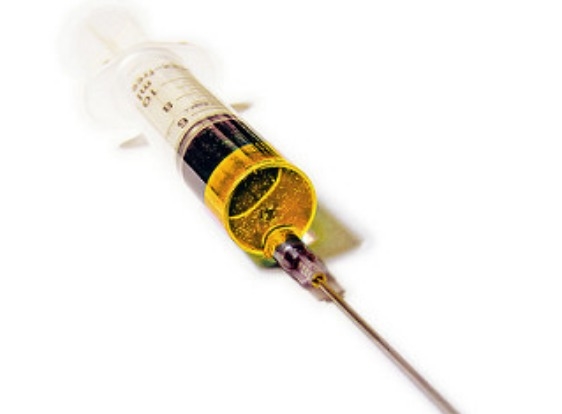
Types Of Vaccines Based On Immunology
23 May 2018 | 4 min Read
Dr C K Vora
Author | 5 Articles
Numerous types of vaccines are available today for protecting your little one against a host of worrisome diseases.
A simple process, vaccination or immunization, involves stimulating body’s immune system by injecting live or killed bacteria and virus or their parts in the body in order to prevent the diseases caused by these organisms.
Certain diseases affecting children can leave lifelong impacts on their health. These are contagious diseases which spread easily in children because their immune system is weak and underdeveloped. A schedule of different types of immunization for babies and older children is available worldwide for children’s diseases, varying based on the diseases prevalent in the country.
Vaccine immunology

An immune response is generated by the body after an antigen presentation to the immune system. An antigen is a combination of proteins present in the disease-causing bacteria or virus which stimulate the release of antibodies in our blood. Antibodies are the protective protein molecules of the body’s immune system that fight the bacterial or viral antigen. Antibodies develop memory against the antigen and attack it when the body gets infected the next time, and thus prevent the occurrence of disease.
A vaccine contains these very disease-causing antigens, but in a highly diluted and completely safe manner. It generates the same response within the body and antibodies are released to fight against the antigen giving protection against various diseases.

Types of vaccines
There are different types of vaccines based on the antigen used in the vaccine. Monovalent and polyvalent vaccines contain either a single strain (e.g., measles vaccine) and two or more strains of the antigen (e.g., oral polio vaccine), respectively. Combination vaccines contain two or more monovalent or polyvalent strains of antigens in a single injection that protects against more than one disease, e.g., DPT vaccine (diphtheria, whooping cough or pertussis and tetanus).
Age-group, immune response, method of vaccine preparation, temperature of storage and the way it is administered all are factored in while choosing the type of vaccine to be used against a particular disease.
World Health Organization and Indian Academy of Paediatrics recommend different types of vaccines for children in India up to the age of 10 years to protect them from various diseases.
1. Live-attenuated vaccines contain live and weakened bacteria or virus. The bacterial or viral antigen in the vaccine produces a mild infection in the body which is similar to the infection caused by these organisms naturally. A single dose of vaccine produces a strong immune reaction and provides varying durations of protection against that specific disease. For example:
- Oral polio vaccine: at birth, 6 months, 9 months and 4 to 6 years.
- Tuberculosis (BCG) : at birth
- Measles: at 9 months
- MMR (mumps, measles and rubella): 15 months and one booster dose
- Chickenpox (varicella vaccine): at 1 year and one booster dose.
2. Inactivated vaccine contains killed bacteria or virus. This vaccine does not give a long-lasting protection and hence requires multiple booster doses to maintain the immunity against the disease.
- Hepatitis A: Two doses between 1 to 2 years.
- Injectable polio vaccine : 6 weeks, 10 weeks , 18 weeks and booster dose at 18 months
3. Subunit vaccines involves use of different parts or segments of killed bacteria or virus. The subunit elicits an immune response which gives protection. Different parts of the organisms used for producing subunit vaccines include:
- Protein-based subunit vaccine: Single protein molecule of the antigen is separated and purified. This purified protein of the antigen stimulates the body’s immune system.
Hepatitis B: at birth, 1 months and 6 months. - Polysaccharide subunit vaccines are made from the protective capsule of the disease causing organisms. e.g., meningococcal vaccine and pneumococcal vaccine.
- Conjugate subunit vaccine is produced using advanced technology. It contains a carrier protein that binds with the polysaccharide of the bacteria and produces an immune response which is effective in protection against diseases like haemophilus influenza (HiB vaccine), meningococcal vaccine, pneumococcal vaccine and human papilloma virus vaccine (HPV).
- DPT (diphtheria, pertussis and tetanus): 6 weeks, 10 weeks and 14 weeks, 2 booster doses at 18 months and 6 years.
- HiB: 6 weeks, 10 weeks, 14 weeks and booster dose at 1 year to 3 years.
- Pneumococcal vaccine: at 6 weeks, 10 weeks, 14 weeks and booster dose at 1 year.
HPV: at 10 years.
4. Toxoid vaccines are prepared from the toxins produced by the disease-causing organisms. A toxoid vaccine is an adjuvant vaccine which means the vaccine contains chemicals containing aluminium or calcium that increase the immune response.
- Tetanus toxoid (TT) given at 10 years.
Also read: Children’s Flu Vaccine: Is It A Must?
A


Related Topics for you
Suggestions offered by doctors on BabyChakra are of advisory nature i.e., for educational and informational purposes only. Content posted on, created for, or compiled by BabyChakra is not intended or designed to replace your doctor's independent judgment about any symptom, condition, or the appropriateness or risks of a procedure or treatment for a given person.
